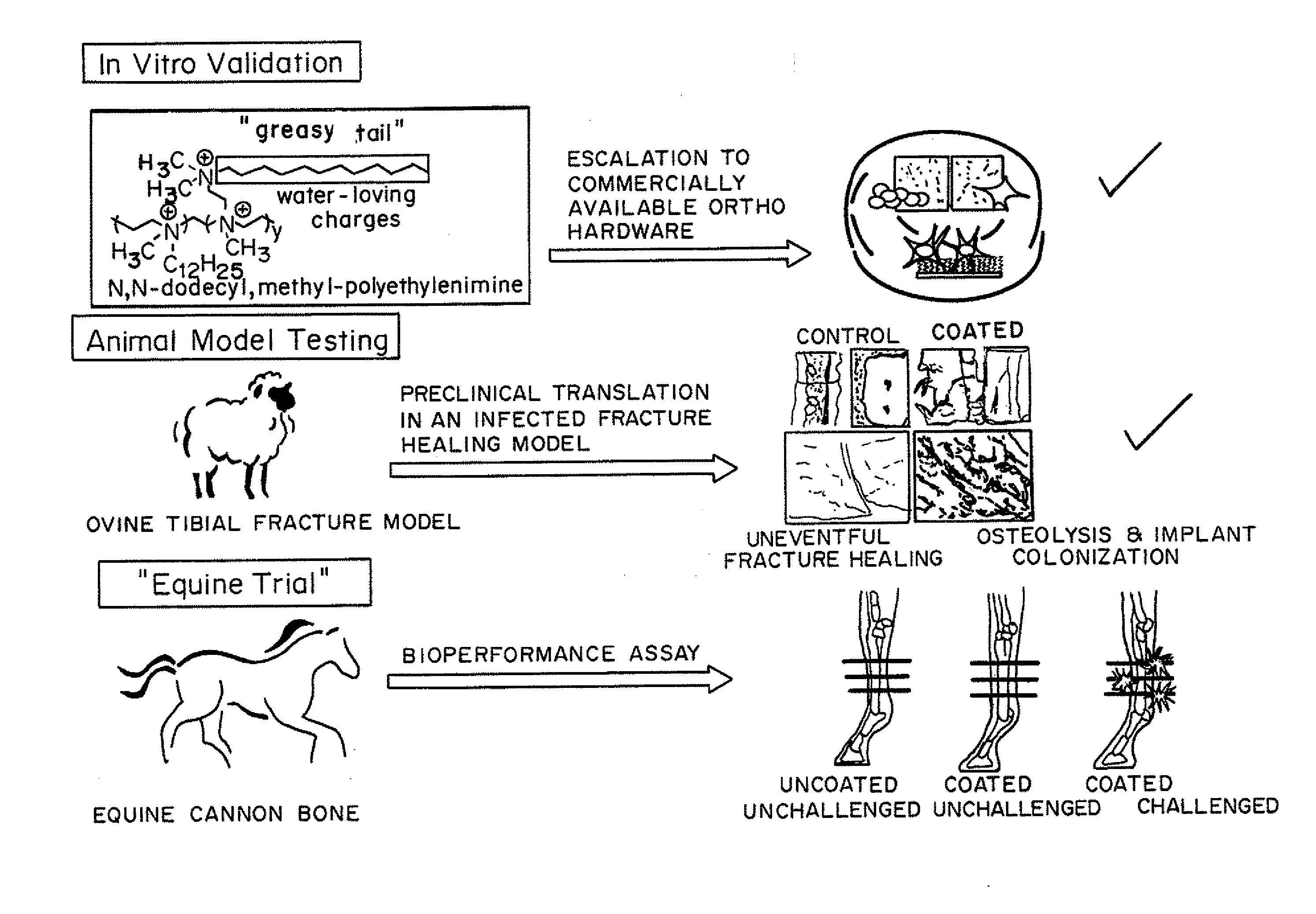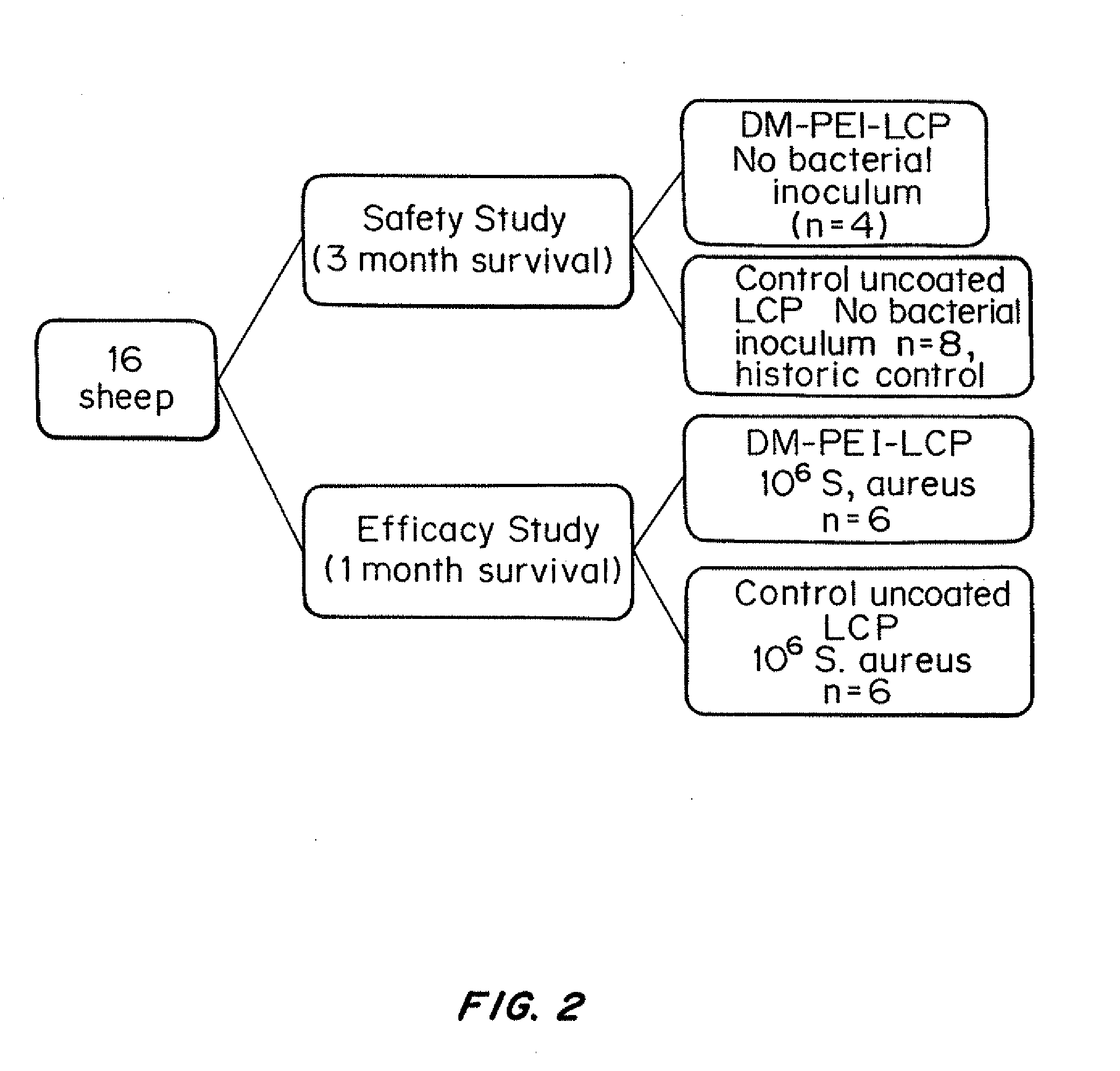Antibacterial coatings that inhibit biofilm formation on implants
- Summary
- Abstract
- Description
- Claims
- Application Information
AI Technical Summary
Benefits of technology
Problems solved by technology
Method used
Image
Examples
example 1
[0149]Metallic Orthopedic Pins
[0150]To scale-up and validate the aforementioned coating procedure for orthopedic hardware, two different metals were used: (1) commercially pure Titanium (cpTi) and (2) stainless steel 316L. Bone plate chips measuring approximately 1 cm by 1 cm were cut transversely from orthopedic bone plates (Locking Compression Plates (LCP); Synthes, West Chester, Pa.) using a diamond saw (EXAKT System, Norderstedt, Germany). They were divided into two groups: control (no surface modification) and treatment (coated with N,N-dodecyl,methyl-PEI) groups, with all assays run in triplicate.
[0151]For the bacterial challenge assay, Staphylococcus aureus (ATCC 25923; this strain of S. aureus is susceptible to commonly used antimicrobials) was cultured in trypticase soy broth (TSB) with shaking at 37° C. for 16 h. A 1-mL aliquot of this culture was sub-cultured with 9 mL of fresh TSB for an additional 2 h prior to dilution to 0.5 McFarland Standard t...
PUM
| Property | Measurement | Unit |
|---|---|---|
| Thickness | aaaaa | aaaaa |
| Thickness | aaaaa | aaaaa |
| Molar mass | aaaaa | aaaaa |
Abstract
Description
Claims
Application Information
 Login to View More
Login to View More - R&D
- Intellectual Property
- Life Sciences
- Materials
- Tech Scout
- Unparalleled Data Quality
- Higher Quality Content
- 60% Fewer Hallucinations
Browse by: Latest US Patents, China's latest patents, Technical Efficacy Thesaurus, Application Domain, Technology Topic, Popular Technical Reports.
© 2025 PatSnap. All rights reserved.Legal|Privacy policy|Modern Slavery Act Transparency Statement|Sitemap|About US| Contact US: help@patsnap.com



